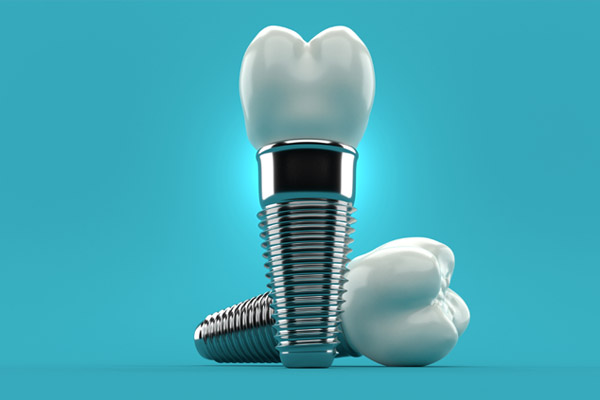3 Common Dental Restoration Procedures

People who are diligent with oral hygiene may still experience tooth decay or damage that requires dental restorations. Even what may appear to be minor damage should be addressed and repaired by a dentist. Not treating chipped, cracked, or missing teeth can cause serious oral health problems that may otherwise be prevented with simple dental work.
When an injury or decay leads to a chip or a crack, the result can often be painful and unsightly. Even minor ones can be noticeable and lead to some discomfort. However, this damage to the enamel can also increase the risks of decay and potential infections. Cracks and chips can give bacteria an even easier pathway towards the inner tissues, expediting the process and leading to more problems in less time.
A missing tooth can be even more problematic. The gaps left in these situations can put excess strain on the surrounding teeth, causing them to wear out and become damaged over time. Other teeth can start to shift, creating more gaps or crooked teeth, which can increase the risks for tooth decay and gum disease by trapping more food particles and making proper cleaning more challenging. Tooth pain and jaw pain can develop and proper speech and digestion may also be inhibited.
Any dental injury can turn into a big problem in no time. However, minor or even unnoticeable damage can also lead to major oral health issues. Routine visits to a dentist can help patients stay on top of these situations, minimize the discomfort that may occur, and restore their smiles.
Common restorative treatments in dentistry
Addressing decay or damage as early as possible can prevent problems from worsening over time. These common treatments are employed to correct various dental issues. Your dentist can help you determine which approach is right for you.
1. Fillings
Even if a patient is not experiencing any pain or sensitivity, an examination by a dentist may identify a cavity. If the cavity is small, a dentist typically corrects the issue by removing the decay, cleaning the area well, and filling the space with amalgam, composite, gold, or porcelain material. A dental filling is typically completed during a single office visit, with the patient returning to normal eating and drinking activities the same day. With the American Dental Association reporting over 175 million fillings are completed in the U.S. each year, this is one of the most common dental restorations performed.
2. Crowns
Occasionally, a cavity or other damage may be too large to be resolved by a simple filling. In such cases, a crown may be placed on the problem tooth instead. A dentist begins the crown procedure by removing the outer portion of the tooth, ensuring all decay or damage is eliminated. An impression is then taken to create a model of the tooth from which the crown is made.
Since it can take time to make the permanent crown, the patient may have a temporary crown placed on the tooth in the meantime. This temporary crown can cause sensitivity, so the patient may need to be cautious when eating and drinking until the permanent crown is seated. Once the final crown is made, inserted, and adjusted, it is cemented in place, and the patient can resume normal activities.
3. Implants
Dental implants may be recommended when a tooth must be removed entirely due to severe decay or damage. Implants are metal fixtures surgically mounted to the jawbone, creating an anchor for permanent artificial teeth. Although seating an implant is a more complicated procedure than getting a filling or a crown, implants are often recommended to improve bone health, aesthetics, and oral comfort.
The steps for seating an implant may vary from patient to patient, depending upon the condition of the existing tooth and its neighbors, the overall strength of the jawbone, and other factors. A dentist can determine the appropriate way to proceed when an implant is the recommended treatment option.
Conclusion
When a problem with your teeth is identified, your dentist is likely to recommend one of these dental restorations. It is important to address any signs of decay or damage quickly to preserve your oral health. Remember that there are many more treatments that can help restore a damaged or lost tooth. Your dentist can help you choose the right plan based on your unique needs so you can enjoy a beautiful and functional smile.
Request an appointment here: https://www.smilesbydesignhuntsville.com or call Smiles by Design, PC at (256) 660-3233 for an appointment in our Huntsville office.
Check out what others are saying about our dental services on Yelp: Dental Restorations in Huntsville, AL.
Recent Posts
Fixing a broken tooth right away is important. This dental damage may seem like nothing more than a cosmetic problem, but it can lead to terrible consequences. Seeing a dentist sooner rather than later can provide immediate relief. If you want to find out the treatments for a broken tooth and its complications, here are…
Dental issues are common, and the best option is to seek a dental restoration. The dentist can offer multiple solutions to save a tooth that has suffered cosmetic or structural damage. Regardless of the problem — tooth decay, chip, fracture, or even discoloration — the tooth can be restored.When determining the appropriate treatments for a…
There is a lot to know about a dental onlay procedure, especially if you are not familiar with this process. Onlays are similar to fillings and crowns, though there are key differences as well. There are times when this is a more sensible choice than other tooth-restoration methods. Your general dentist can help you decide…
Patients who are dealing with cavities may need a dental inlay to restore their smile. While many patients are familiar with the traditional fillings that are used as a treatment, there is often confusion regarding what inlays are and how they differ from a filling. The following explains what patients need to know about this…


